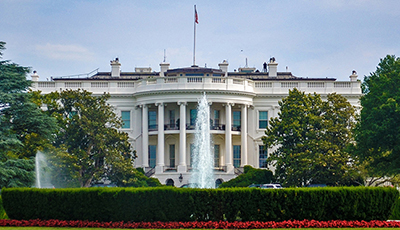
Biden Administration Announces Steps to Ease Housing Costs

The Biden Administration on Monday announced new actions to improve housing supply and close the housing gap.
The Administration’s Housing Supply Action Plan—some of which can be implemented by executive order, some of which would require legislative action—is designed to ease the burden of housing costs over five years, by boosting supply of quality housing, including creation and preservation of hundreds of thousands of affordable housing units in the next three years.
When aligned with other policies to reduce housing costs and ensure affordability, such as rental assistance and down payment assistance, closing the gap will mean more affordable rents and more attainable homeownership for Americans in every community,” the Administration said in a statement. “This is the most comprehensive all of government effort to close the housing supply shortfall in history.”
Under the Plan, the Administration would:
–Reward jurisdictions that have reformed zoning and land-use policies with higher scores in certain federal grant processes, for the first time at scale.
–Deploy new financing mechanisms to build and preserve more housing where financing gaps currently exist: manufactured housing (including with chattel loans that the majority of manufactured housing purchasers rely on), accessory dwelling units (ADUs), 2-4 unit properties, and smaller multifamily buildings.
–Expand and improve existing forms of federal financing, including for affordable multifamily development and preservation. This includes making Construction to Permanent loans (where one loan finances the construction but is also a long-term mortgage) more widely available by exploring the feasibility of Fannie Mae purchase of these loans; promoting the use of state, local, and Tribal government COVID-19 recovery funds to expand affordable housing supply; and announcing reforms to the Low Income Housing Tax Credit, which provides credits to private investors developing affordable rental housing, and the HOME Investment Partnerships Program (HOME), which provides grants to states and localities that communities use to fund a wide range of housing activities.
–Ensure that more government-owned supply of homes and other housing goes to owners who will live in them – or non-profits who will rehab them – not large institutional investors.
–Work with the private sector to address supply chain challenges and improve building techniques to finish construction in 2022 on the most new homes in any year since 2006.
“Today’s rising housing costs are years in the making,” the Administration said. “Fewer new homes were built in the decade following the Great Recession than in any decade since the 1960s – constraining housing supply and failing to keep pace with demand and household formation. This mismatch between housing supply and housing demand grew during the pandemic.”
Mortgage Bankers Association President and CEO Bob Broeksmit, CMB, released the following statement the Administration plan:
“MBA commends the Biden administration for announcing steps to alleviate the acute shortage of single-family and multifamily housing for prospective homebuyers and renters.
“Eliminating the regulatory barriers to new construction, including manufactured housing, in underserved markets; expanding affordable financing for multifamily development and rehab projects; and a commitment to more private and public sector partnerships will help address the housing supply and affordability challenges that continue to burden families.
“As the administration focuses on ways to improve the financing of multifamily projects, MBA strongly encourages HUD to focus on the issues that continue to lead to significant lending pipeline delays in its MAP program, which is a primary financing option for producing more affordable rental housing.
“MBA will examine all aspects of the plan in greater detail and remains committed to working with the administration, Congress, and industry stakeholders on safe and responsible policies that increase homeownership opportunities and affordable rental housing options across America, especially for minority and low- and moderate-income households.”
The Administration estimated the shortfall in the housing supply is more than 1.5 million homes nationwide. “This shortfall burdens family budgets, drives up inflation, limits economic growth, maintains residential segregation and exacerbates climate change,” it said. “Rising housing costs have burdened families of all incomes, with a particular impact on low- and moderate-income families and people and communities of color.”
The Administration urged Congress to pass investments in housing production and preservation. The Administration’s 2023 Budget includes investments in housing supply that would lead to production or rehabilitation of another 500,000 homes.
